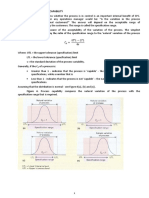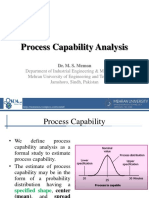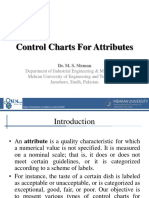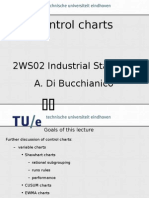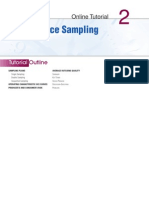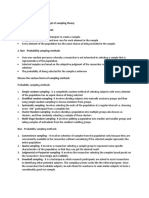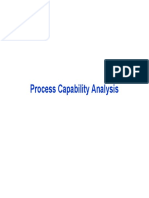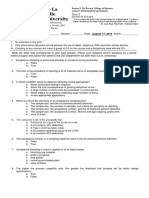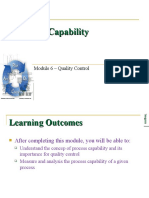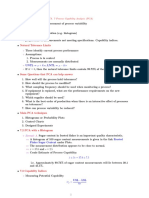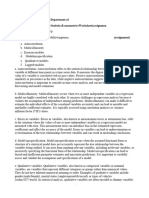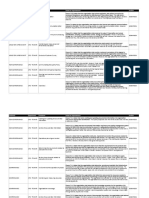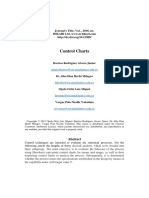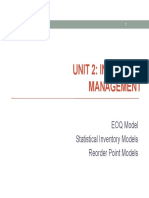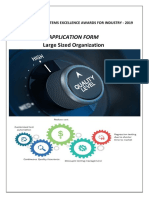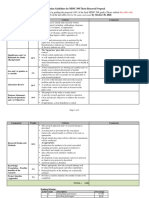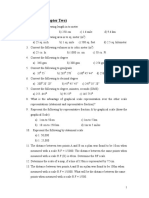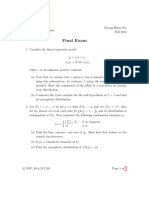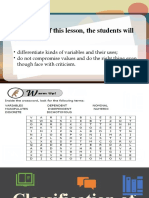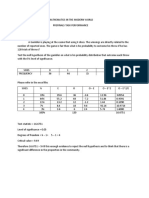0% found this document useful (0 votes)
297 views75 pagesStatistical Process Control Guide
1) Control charts are used to monitor processes and detect when assignable causes result in the process becoming out of control. They graphically display sample data over time with control limits to determine if the process is behaving randomly or systematically.
2) There are control charts for variables and attributes depending on the type of quality characteristic being measured. Parameters like sample size, control limits, and sampling frequency must be chosen appropriately.
3) Patterns in the control chart can also indicate a process is out of control even if no points fall outside control limits, such as long runs, cycles, or an uneven distribution of points.
Uploaded by
AntonioCopyright
© © All Rights Reserved
We take content rights seriously. If you suspect this is your content, claim it here.
Available Formats
Download as PDF, TXT or read online on Scribd
0% found this document useful (0 votes)
297 views75 pagesStatistical Process Control Guide
1) Control charts are used to monitor processes and detect when assignable causes result in the process becoming out of control. They graphically display sample data over time with control limits to determine if the process is behaving randomly or systematically.
2) There are control charts for variables and attributes depending on the type of quality characteristic being measured. Parameters like sample size, control limits, and sampling frequency must be chosen appropriately.
3) Patterns in the control chart can also indicate a process is out of control even if no points fall outside control limits, such as long runs, cycles, or an uneven distribution of points.
Uploaded by
AntonioCopyright
© © All Rights Reserved
We take content rights seriously. If you suspect this is your content, claim it here.
Available Formats
Download as PDF, TXT or read online on Scribd
/ 75





